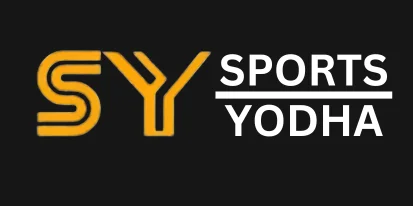Playground Surface are an incredible place for children to grow, exercise, develop social skills and learn from each other. In addition to the cognitive benefits, there are also emotional benefits. Unstructured play time involving physical activity can reduce stress levels and help children deal with their emotions. All of these great things are incredibly important for children’s development.
Also, Are you looking for outdoor gym equipment manufacturers in India?
Playground Surface are such important places for children’s development, so it’s important that they are safe. While structures may be secured with railings or handholds, there is always the potential for an accident to occur. Under these circumstances, it’s imperative that playground designers/owners choose the right surface to protect children.
In today’s world, there are many different surfaces to choose from. You can choose the classic pebbled gravel or something more streamlined such as poured-in-place rubber flooring. All the options can be overwhelming when deciding which surface you want to go with. This article will walk you through the different types of surfaces; their benefits, potential drawbacks and finally, the cost.
Engineered Wood Fiber (EWF)
Wood fiber is an organic material that is great for eco-friendly playgrounds. It is made by spreading a thick layer of wood fiber chips onto the playground surface. However, since it is a loose surface, it requires a lot of regular maintenance. With these types of surfaces, children often dig up the wood fibers or, in high-traffic areas, naturally move the fibers around when running. To compensate for this variation in the surface, install these at the minimum depth to keep the playground safe.
Each Playground Surface must comply with the critical fall heights specified for a specific area of the playground. This means that if a structure is at a certain height, the surface depth must be appropriate to avoid serious injury. To ensure playground safety, these loose surfaces must be raked and inspected on a regular basis in accordance with Critical Fall Height (CFH) compliance regulations.
The average cost of the material is only $1.50 to $3.00 per square foot. However, this does not include installation or site preparation. While these surfaces may appear to be less expensive at first, they require the greatest upkeep. While these surfaces may appear to be affordable at first, they require the greatest upkeep. These surfaces should be examined every two weeks to eliminate any foreign items, and as stated before, they should be raked to meet safety standards. Additionally, you may need to add material periodically to ensure adequate depth to comply with safety regulations.
Synthetic Grass
Synthetic grass is another great option for protecting kids, but it is a little more expensive than loose material. Synthetic grass is also a great alternative to other materials like rubber or wood. The grass gives the playground a nice natural feel while often lowering the surface temperature. The material itself comes with or without infill, but professional installers will require infill to help maintain its structure. Depending on the manufacturer, synthetic grass can cost more or less, but this method can run anywhere from $15-$23 per square foot.
The initial cost is much higher, but the maintenance required is not nearly as involved as any other loose surface available. Moderate testing is still required, but less frequently. Generally, these surfaces wear out over time and need to be resurfaced when they wear out.
Bonded Rubber and Poured in Place Surfaces
Bonded rubber surfacing is a more cost-effective alternative to poured-in-place rubber. We offer our DuraTurf Bonded Rubber in a variety of color options with 100% premium recycled shredded rubber. We can create the look of shredded natural fiber mulch without the maintenance of loose mulch. Bonded rubber surfacing can cost between $10-$15 per square foot.
Although they are more expensive, cast-in-place surfaces can meet your needs whether you want a solid color or a myriad of colors. Because of the flexible nature of cast-in-place designs, you can put your school mascot, church logo, or any other design on this surface. For a reason, these surfaces are the most expensive on the list. They are by far the most durable and have the most elasticity from the other surfaces we have named. These surfaces are perfect for both indoor and outdoor surfaces because of their flexibility and durability. Plus, these surfaces stay great no matter what the weather conditions are. Rubber non-stick surfaces are very non-stick, making them extremely safe for kids playing in the rain. Plus, this is one of the safest surfaces on the list because of its high elasticity.
Conclusion
In the end, it all depends on what you are willing to sacrifice and what you can afford. Loose fill is a great option for underfunded schools due to the low entry cost, but it requires the most maintenance and time. Synthetic grass is a good, cost-effective, and worthy alternative to other solid surface options, as it looks natural and has a low surface temperature. It requires a moderate amount of maintenance but is durable and safe. Rubber tiles and poured-in-place rubber surfaces are by far the most durable and require the least maintenance. Every playground and budget has different needs, and hopefully this will help you select or re-install your surface to keep the kids safe and your playgrounds looking great!
Visit our social media:- Instagram, Facebook, You Tube.
Tags: indoor playgroundplayground equipmentPLayground SafetySports Yodha
